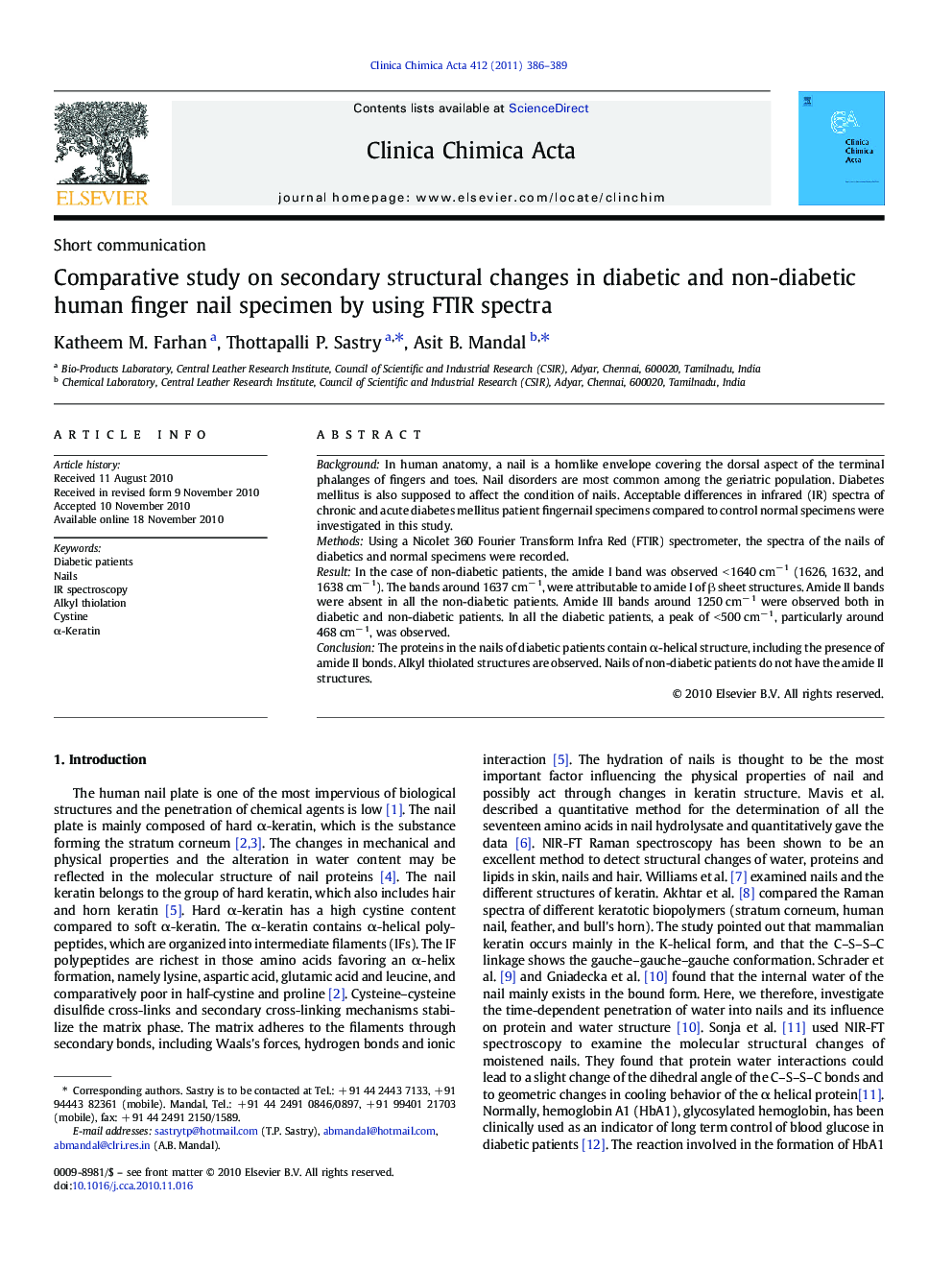| Article ID | Journal | Published Year | Pages | File Type |
|---|---|---|---|---|
| 1966547 | Clinica Chimica Acta | 2011 | 4 Pages |
BackgroundIn human anatomy, a nail is a hornlike envelope covering the dorsal aspect of the terminal phalanges of fingers and toes. Nail disorders are most common among the geriatric population. Diabetes mellitus is also supposed to affect the condition of nails. Acceptable differences in infrared (IR) spectra of chronic and acute diabetes mellitus patient fingernail specimens compared to control normal specimens were investigated in this study.MethodsUsing a Nicolet 360 Fourier Transform Infra Red (FTIR) spectrometer, the spectra of the nails of diabetics and normal specimens were recorded.ResultIn the case of non-diabetic patients, the amide I band was observed < 1640 cm− 1 (1626, 1632, and 1638 cm− 1). The bands around 1637 cm− 1, were attributable to amide I of β sheet structures. Amide II bands were absent in all the non-diabetic patients. Amide III bands around 1250 cm− 1 were observed both in diabetic and non-diabetic patients. In all the diabetic patients, a peak of < 500 cm− 1, particularly around 468 cm− 1, was observed.ConclusionThe proteins in the nails of diabetic patients contain α-helical structure, including the presence of amide II bonds. Alkyl thiolated structures are observed. Nails of non-diabetic patients do not have the amide II structures.
